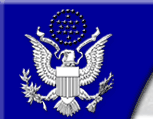

- States should use standardized and understandable language for health professions regulation and its functions to clearly describe them for consumers, provider organizations, businesses, and the professions.
- States should standardize entry-to-practice requirements and limit them to competence assessments for health professions to facilitate the physical and professional mobility of the health professions.
- States should base practice acts on demonstrated initial and continuing competence. This process must allow and expect different professions to share overlapping scopes of practice. States should explore pathways to allow all professionals to provide services to the full extent of their current knowledge, training, experience and skills.
- States should redesign health professional boards and their functions to reflect the interdisciplinary and public accountability demands of the changing health care delivery system.
- Boards should educate consumers to assist them in obtaining the information necessary to make decision about practitioners and to improve the board's public accountability.
- Boards should cooperate with other public and private organizations in collecting data on regulated health professions to support effective workforce planning.
- States should require each board to develop, implement and evaluate continuing competency requirements to assure the continuing competence of regulated health care professionals.
- States should maintain a fair, cost-effective and uniform disciplinary process to exclude incompetent practitioners to protect and promote the public's health.
- States should develop evaluation tools that assess the objectives, successes and shortcomings of their regulatory systems and bodies to best protect and promote the public's health.
- States should understand the links, overlaps and conflicts between their health care workforce regulatory systems and other systems which affect the education, regulation and practice of health care practitioners and work to develop partnerships to streamline regulatory structures and processes
PEW Taskforce Recommendations
PEW Taskforce Commission Recommendations for Regulation of the Health Care Workforce